Press Release
Few Offenders Remain in Restrictive Housing in Virginia Prisons: Virginia Continues Program Recognized for Transforming Highest-Security Prisons
September 09, 2015
RICHMOND — Across the nation, from state houses to kitchen tables, a conversation is brewing about the number of people America incarcerates, how those people are treated once they’re in the system, and the struggle to appropriately handle those who need restrictive housing. When Virginia instituted in 2011 an innovative program to give state inmates pathways out of restrictive prison housing, 511 offenders were housed in administrative segregation, whether for their protection or the protection of others. Four years later, only 160 offenders remain.
Virginia was nationally recognized in 2013 for transforming the state’s toughest prisons with wide sweeping culture change, including new opportunities for high-risk offenders to earn their way to lower security level prisons. The Virginia Department of Corrections’ (VADOC) innovative Administrative Step-Down program, partnering Red Onion State Prison (ROSP) with neighboring Wallens Ridge State Prison, received the State Transformation in Action (STAR) Award from the Council of State Government’s Southern Legislative Conference.
The Step-Down initiative allows offenders in restrictive housing more step-by-step opportunities to earn their way to a lower security status and lower security prisons. In the four years since the Step-Down program began, more than 350 restrictive housing offenders have participated in the program. To date, only nine offenders enrolled in the program have had a setback resulting in their return to restrictive housing.
“It’s in everyone’s best interests – offenders, staff, and the public – for these high-risk offenders to participate in programs and move into the general prison population before they are released back to our communities,” said VADOC Director Harold Clarke. “Further, the Step-Down program is important even for offenders with life sentences; they are contributing members of the prison community and they have a real effect on the men who are going back out into the public.”
The vast majority of Virginia’s offenders (around 90 percent) will be released back to the community at some point. In 2010 and 2011, before the Step Down program began in earnest, 50 and 58 (respectively) VADOC offenders were released straight from restrictive housing to the community. In 2012, there were 21 such releases and in 2013 there were 11. In 2014, only four individuals were released straight from restrictive housing. So far in 2015, only two have been released straight from restrictive housing.
“We have seen incredible progress on the part of so many men in this program,” said VADOC Reentry and Programs Director Scott Richeson. “We have based our programming on evidence based practices involving strategies to motivate participation and using cognitive behavioral programming for participants to learn new ways to think, make decisions and behave pro-socially. We also have a number of offenders at any given time who refuse to move out of restrictive housing. These are people who, for a variety of reasons, do not want to live and interact with the hundreds of other men in prison. We continue to look for strategies, programs and earned incentives to encourage their participation in the step down process. We recognize that due to safety concerns, there will always be some offenders who require restrictive housing management but we want that number to be as low as possible.”
“After going through the Step Down program, some of these men are participating in educational programs and performing prison jobs for the first time in years,” said Clarke. “Not only has this been good for the offenders, but the staff at these high-security prisons report that they feel safer and less stressed at work.” This program exemplifies the VADOC’s mission to increase long term public safety through strategies that reduce offenders’ criminal risks.
More information on the VADOC can be found at www.vadoc.virginia.gov.
